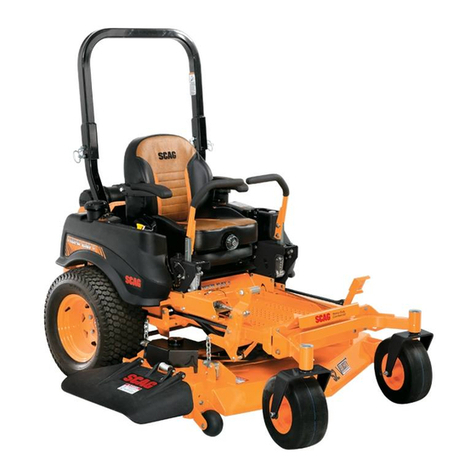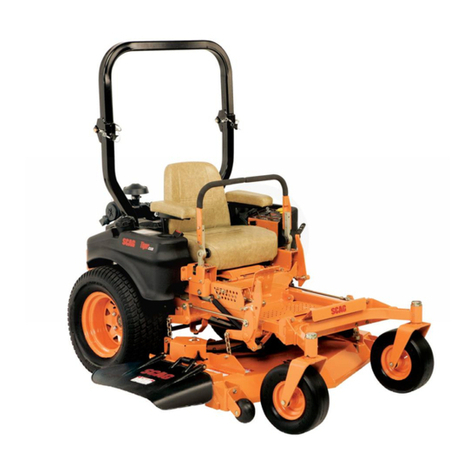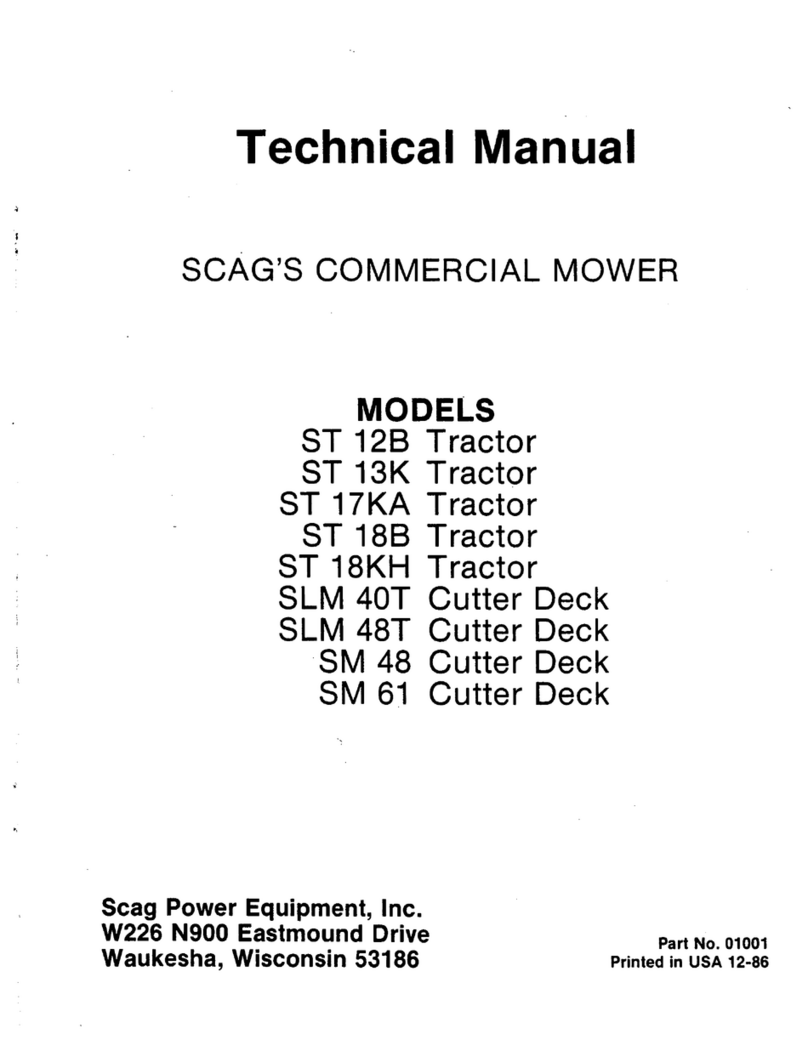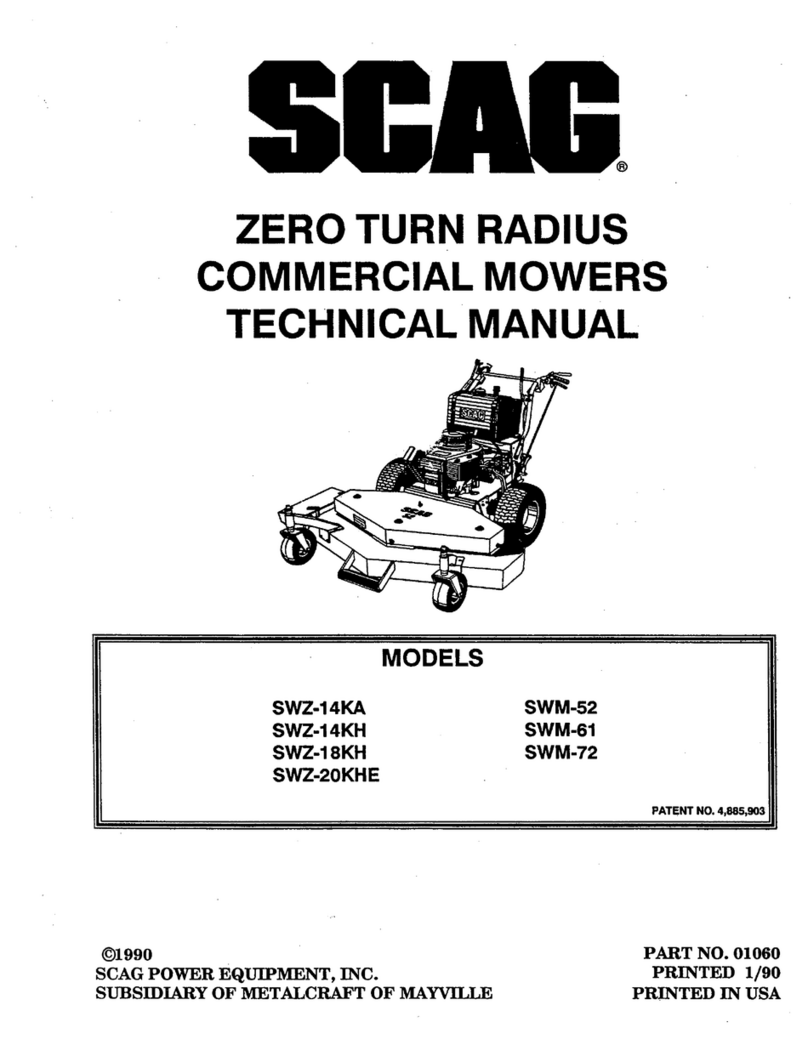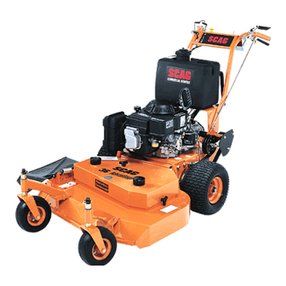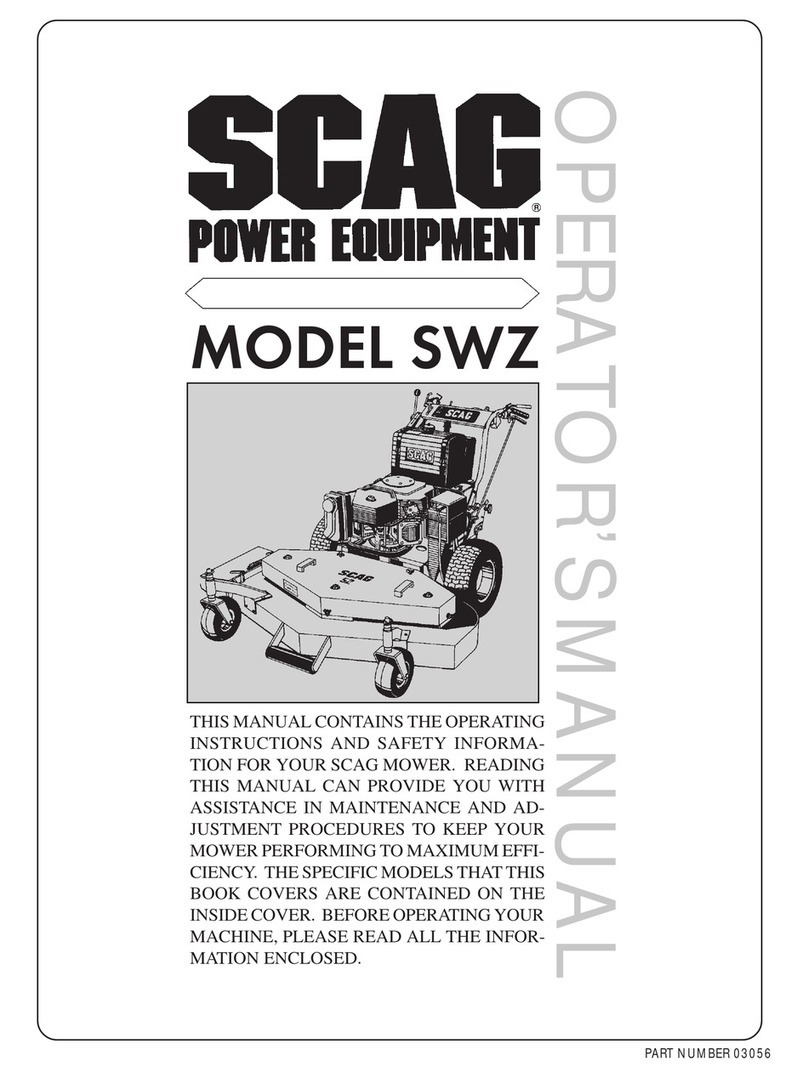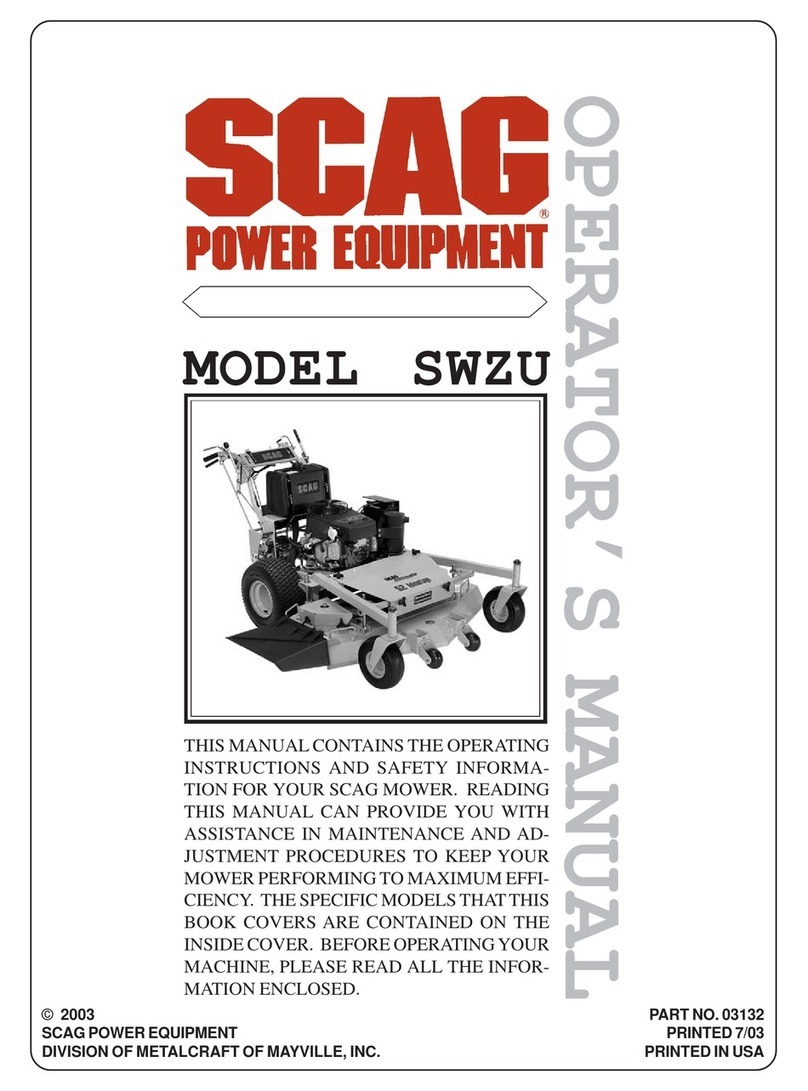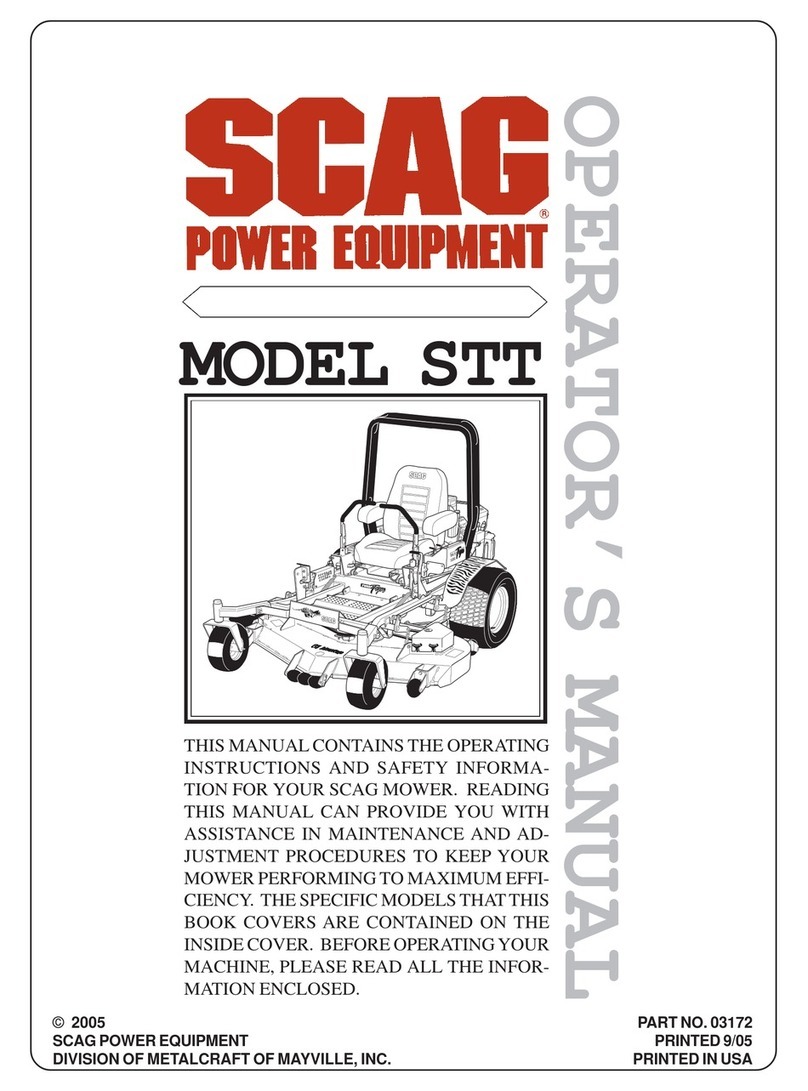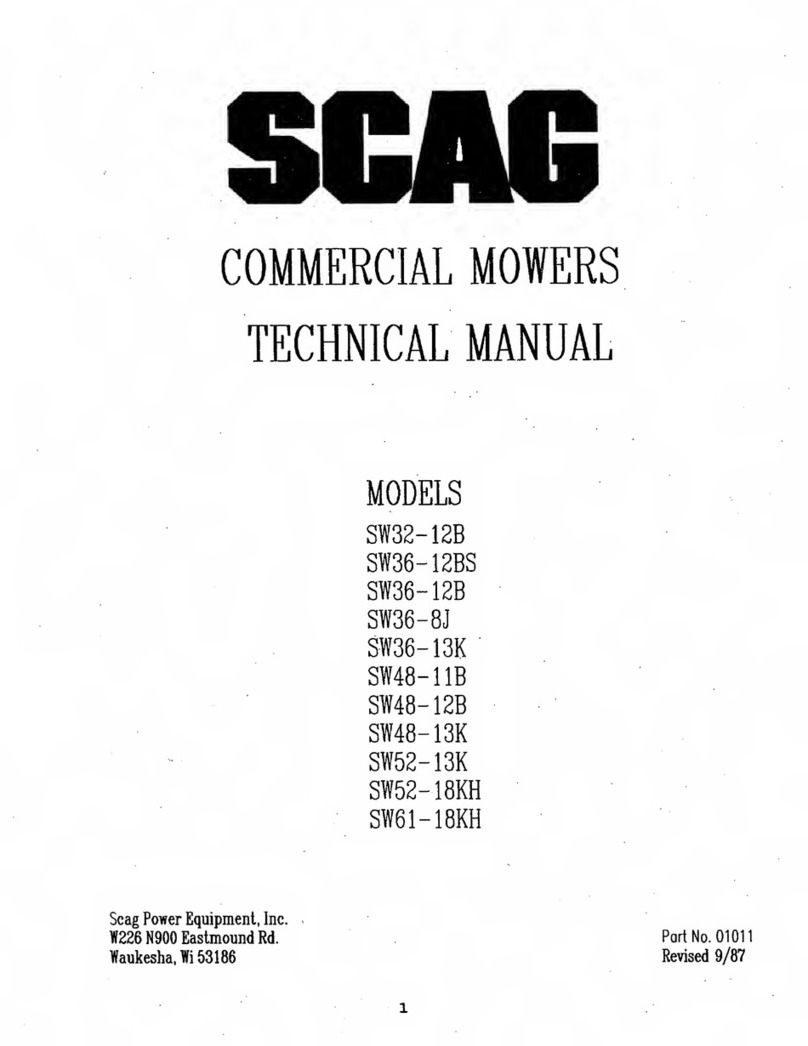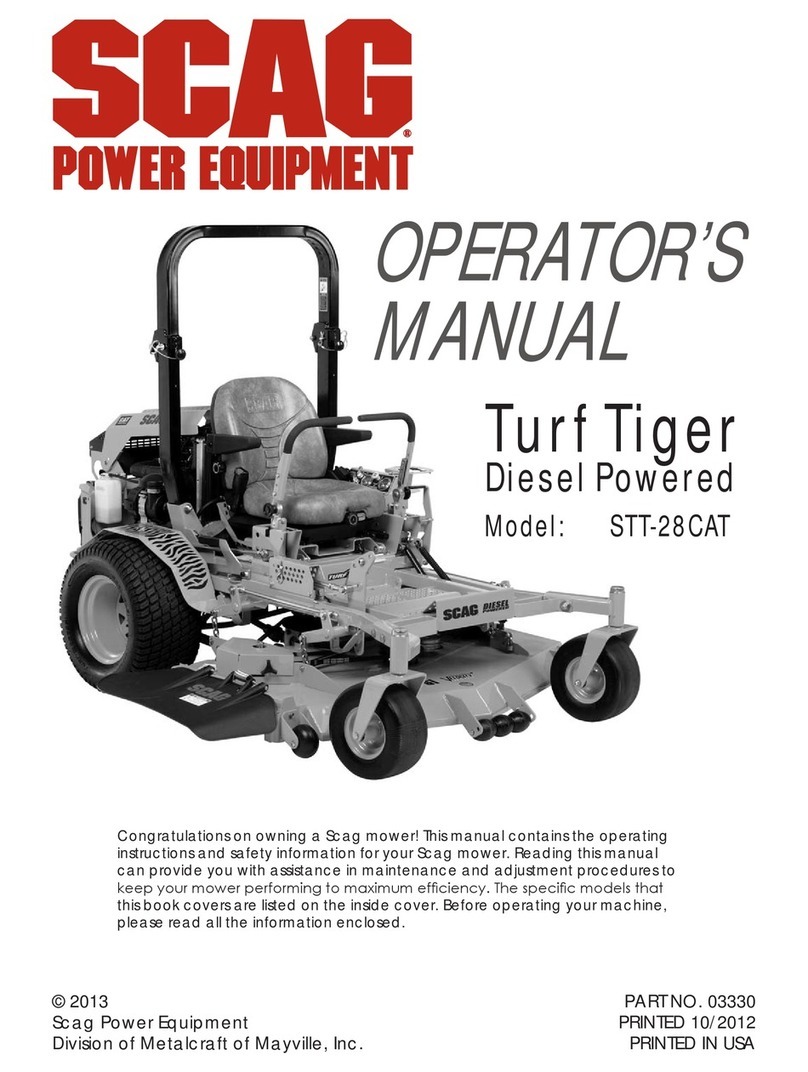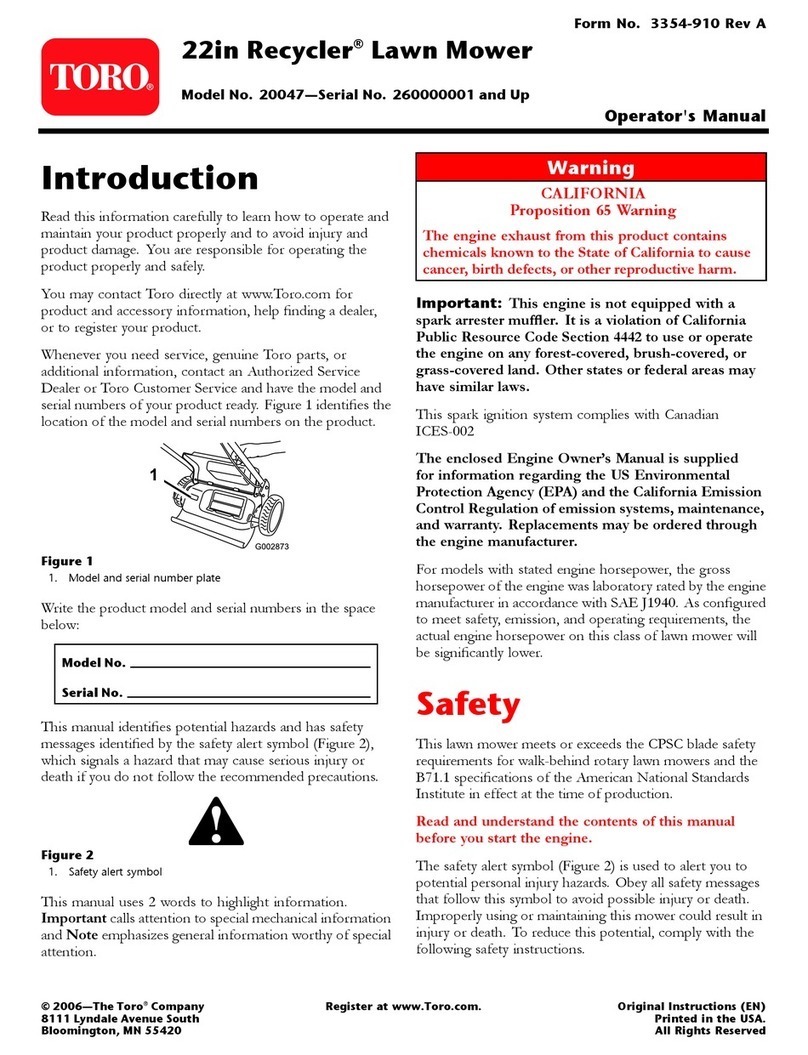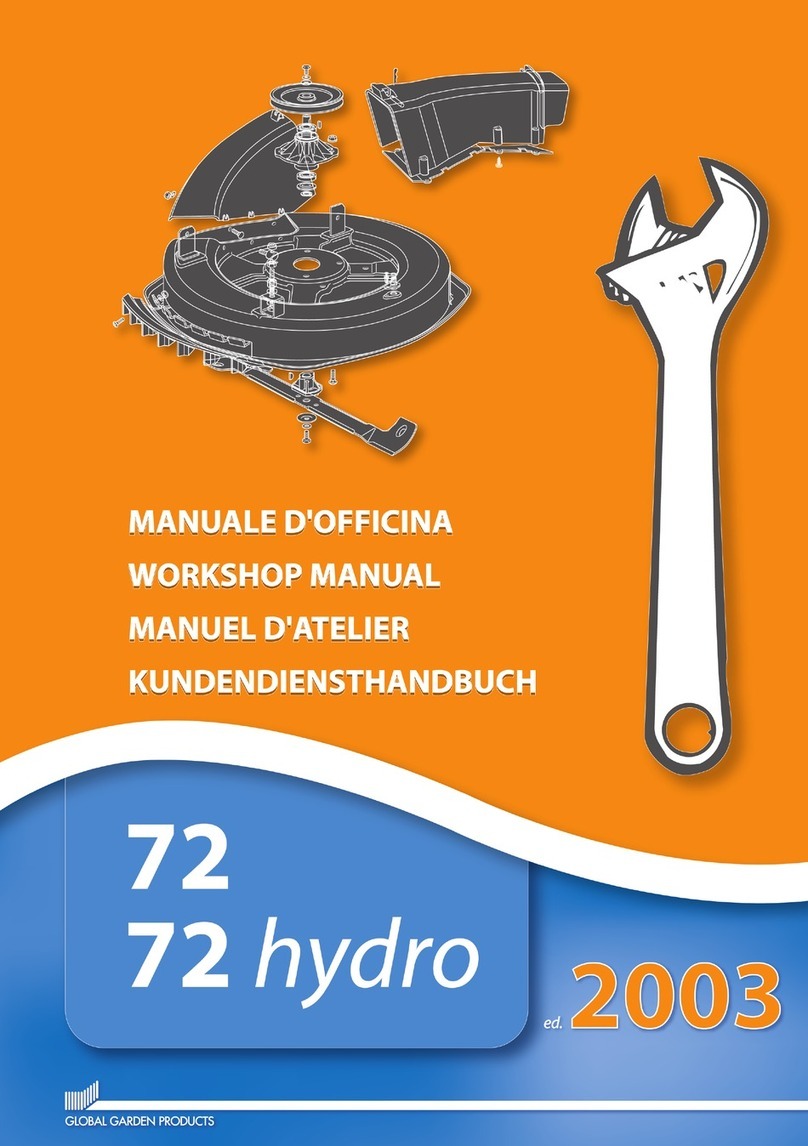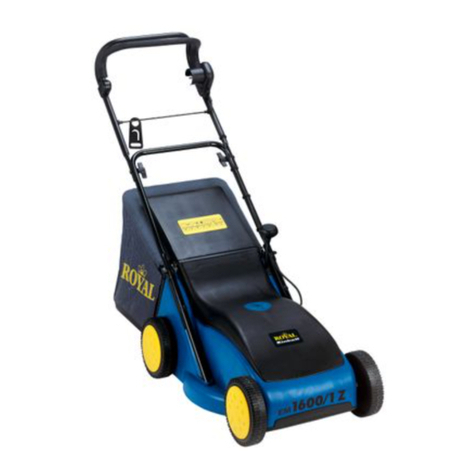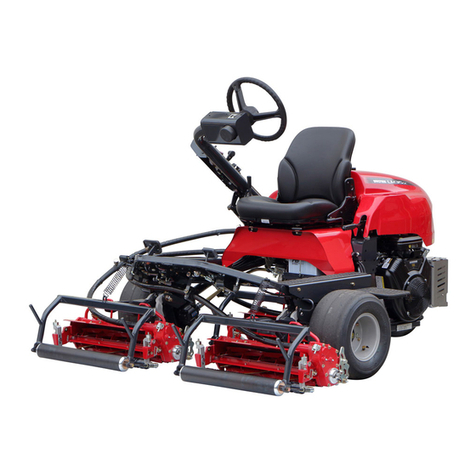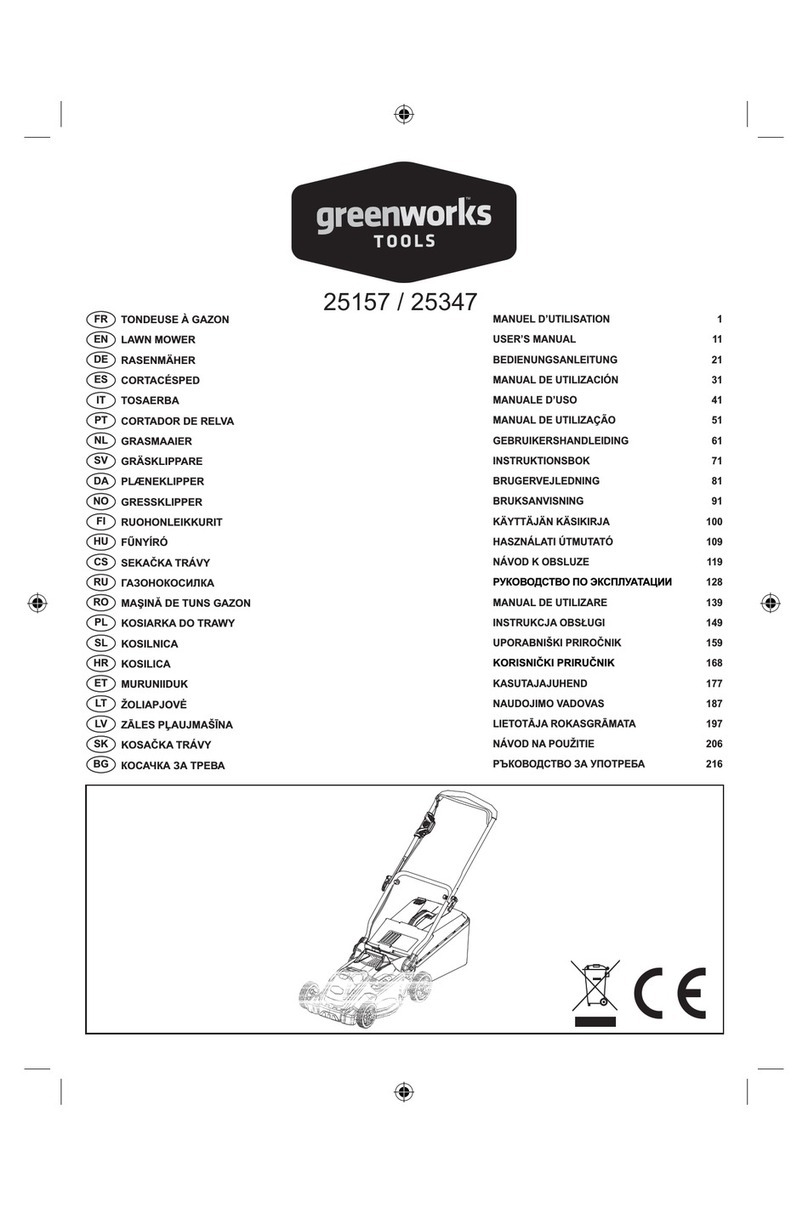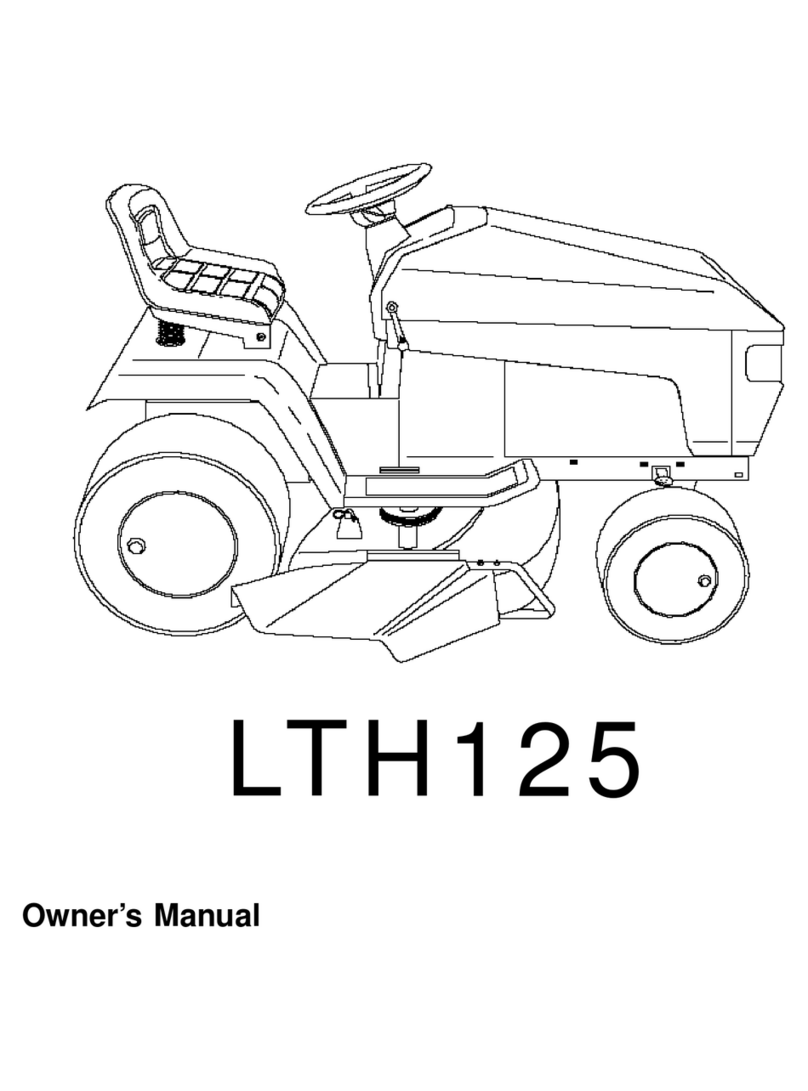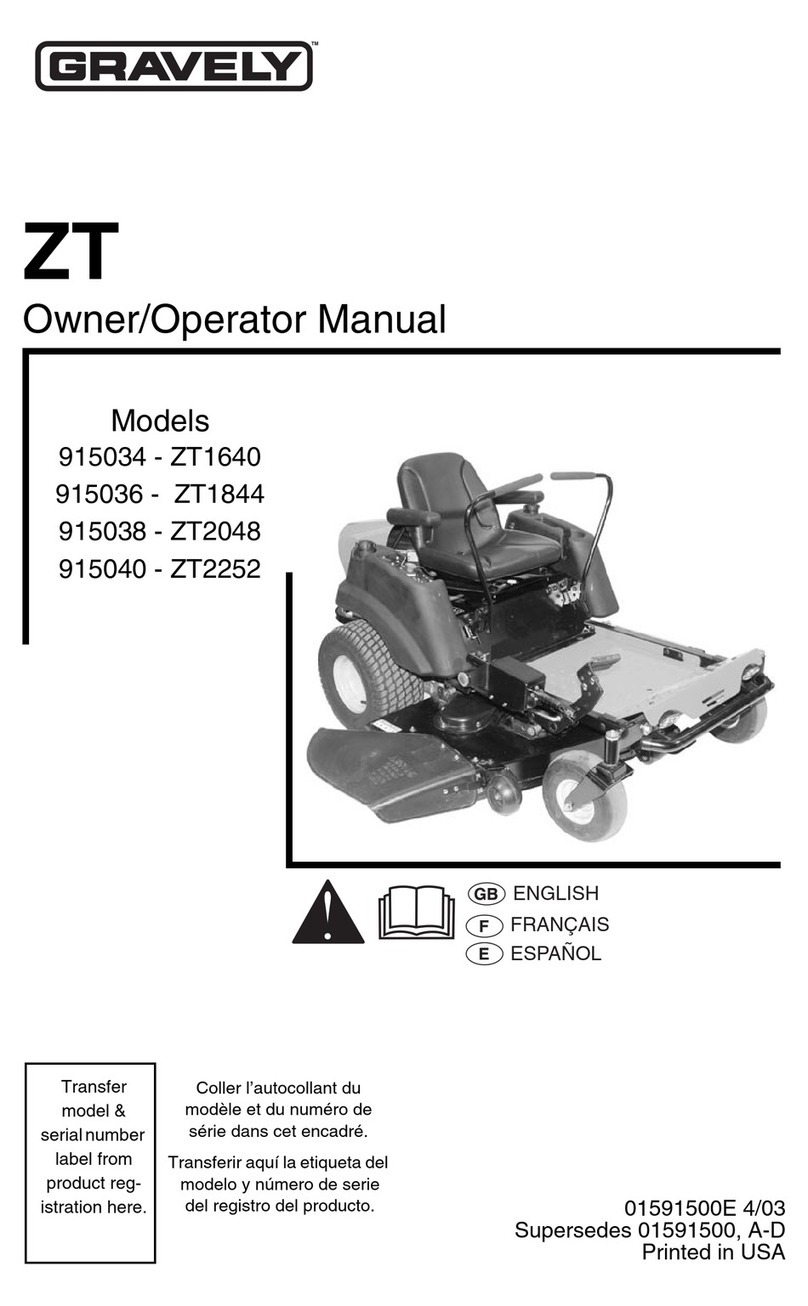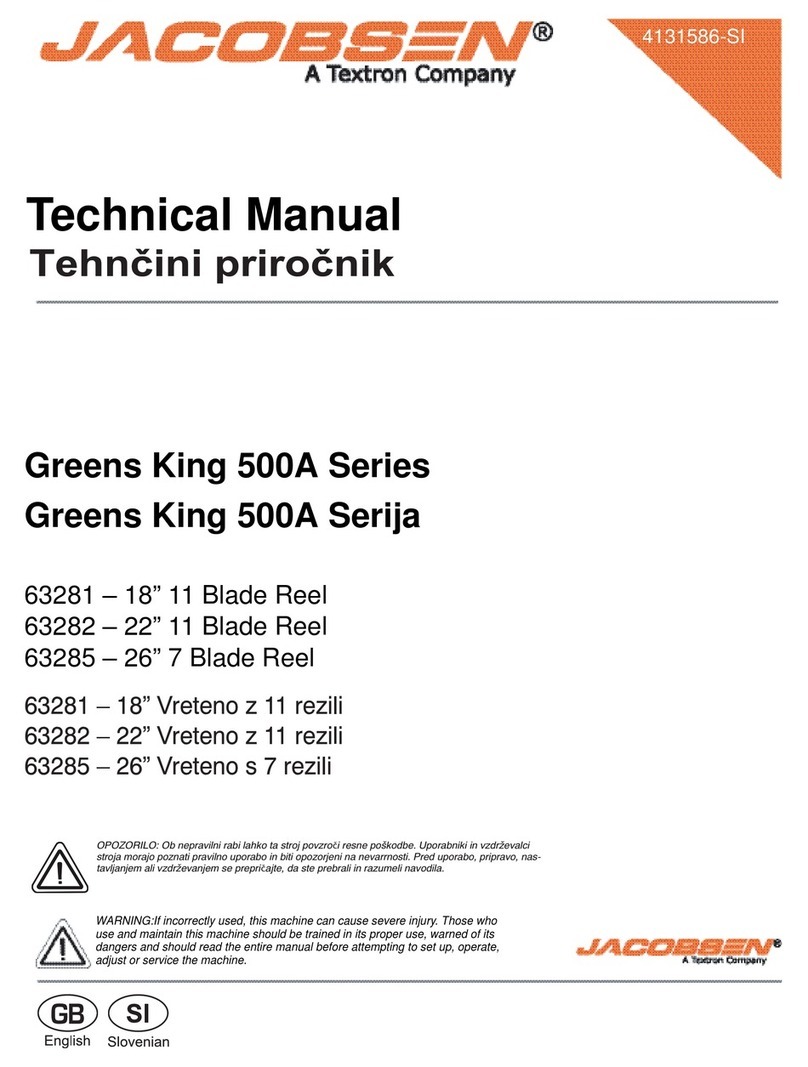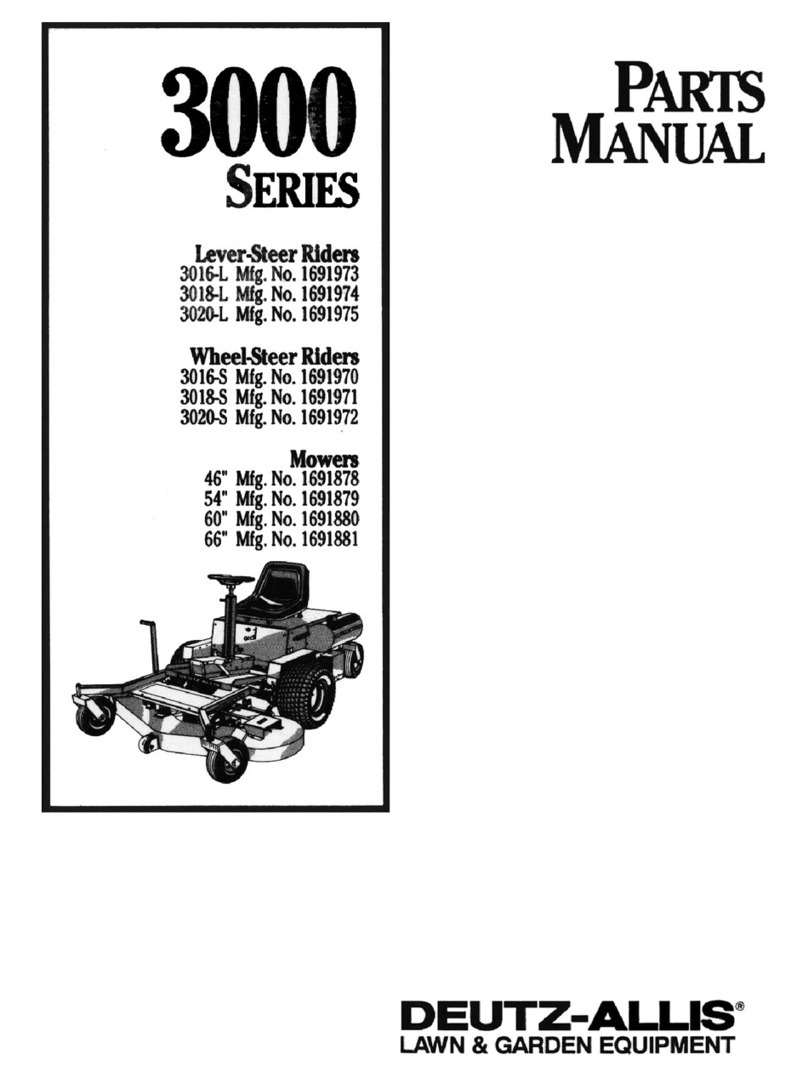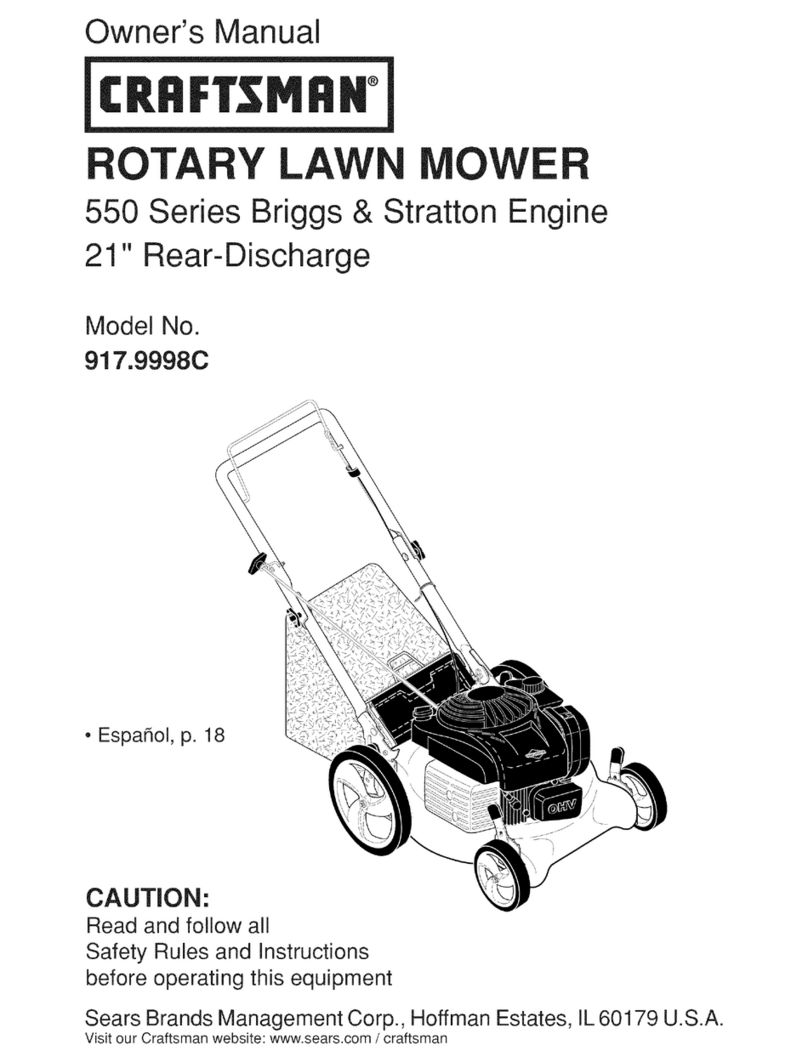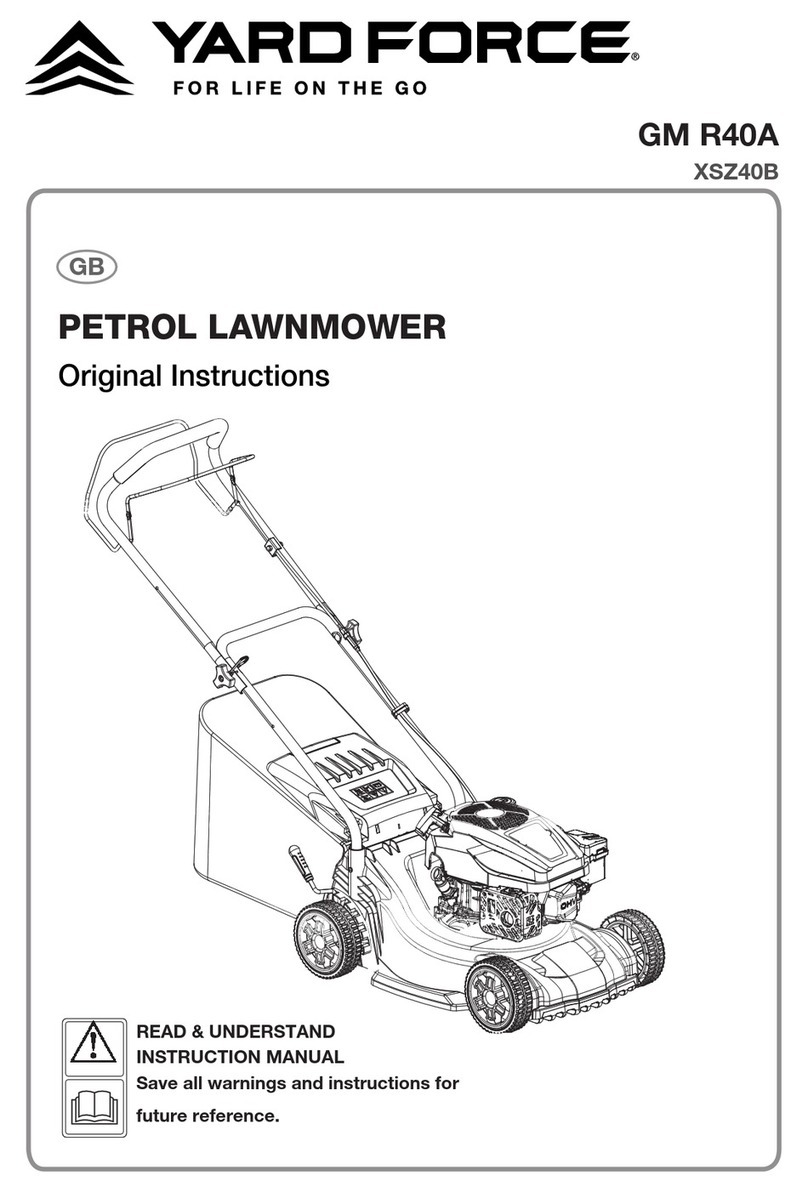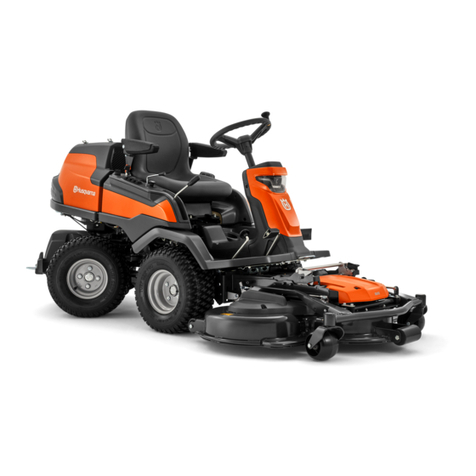
5
Section 2
WARNING
This machine is equipped with an interlock
system intended to protect the operator and
others from injury. This is accomplished by
preventing the engine from starting unless the
deck drive is disengaged, the steering control
levers are in the neutral position and the operator
is in the seat. The system shuts o the engine if
the operator leaves the seat with the deck drive
engaged and/or the steering control levers are not
in the neutral position and the parking brake is
not engaged. Never operate equipment with the
interlock system disconnected or malfunctioning.
1. Sit in the seat in the operating position, engage the
parking brake, place the steering control levers in
the neutral lock position, and engage the PTO switch
to the ON (up) position. Try to start the engine; the
engine should not start
2. Sit in the seat in the operating position, engage the
parking brake, move the PTO switch to the OFF
(down) position, move either of the steering control
handles out of the neutral lock position. Try to start
the engine; the engine should not start. Repeat for
the other steering control lever.
3. All SPZ models will start with the parking brake
engaged or disengaged. For all test procedures
listed below, the engine should be started with the
parking brake engaged unless specified otherwise.
4. Sit in the seat in the operating position, engage the
parking brake, place the steering control levers in
the neutral lock position, move the PTO switch to the
OFF (down) position, and start the engine. With the
engine running, release the parking brake and rise
slightly off of the seat. The engine should shut off.
5. Sit in the seat in the operating position, engage the
parking brake, place the steering control levers in
the neutral lock position, move the PTO switch to
the OFF (down) position, and start the engine. With
the engine running, engage the PTO switch to the
ON (up) position, and rise slightly off of the seat. The
engine should shut off.
6. Sit in the seat in the operating position, engage the
parking brake, place the steering control levers in
the neutral lock position, move the PTO switch to the
OFF (down) position, and start the engine. With the
engine running, move either steering control lever
out of the neutral lock position. The engine should
shut off. Repeat for the other steering control lever.
2.5 OPERATION CONSIDERATIONS
1. Know the function of all controls and how to stop
quickly.
WARNING
DO NOT operate on steep slopes. To check a
slope, attempt to back up it (with the cutter deck
down). If the machine can back up the slope
without the wheels slipping, reduce speed and
use extreme caution. Under no circumstances
should the machine be operated on slopes
greater than 15 degrees. See Figure 2-5, Page
11 to determine approximate slope or use a at
surface and an app on your cell phone. ALWAYS
FOLLOW OSHA APPROVED OPERATION.
2. Reduce speed and exercise extreme caution on
slopes and sharp turns to prevent tipping or loss
of control. Be especially cautious when changing
directions on slopes.
3. Stay at least 2 cutting widths away from drop-offs,
ditches, retaining walls, water, avoid any slope
exceeding 15-degrees, and do not mow under trees
on slopes with the roll bar down.
4. To prevent tipping or loss of control, start and stop
smoothly, avoid unnecessary turns and travel at
reduced speed. Use caution when operating the
mower on an incline with the optional grass catcher
installed.
5. If the operator were to lose steering control of the
mower while operating, move both steering levers
to the neutral position and immediately apply the
parking brake. Inspect the machine and correct the
problem before continuing to operate.
6. When using any attachment, never direct the
discharge of material toward bystanders or allow
anyone near the machine while in operation.




















